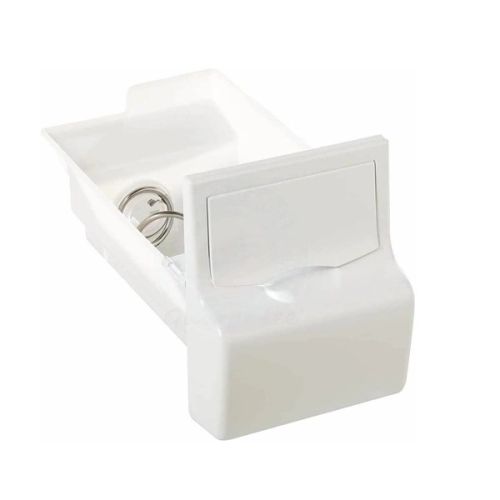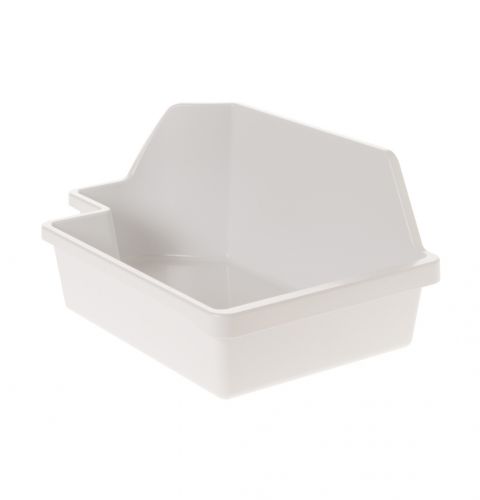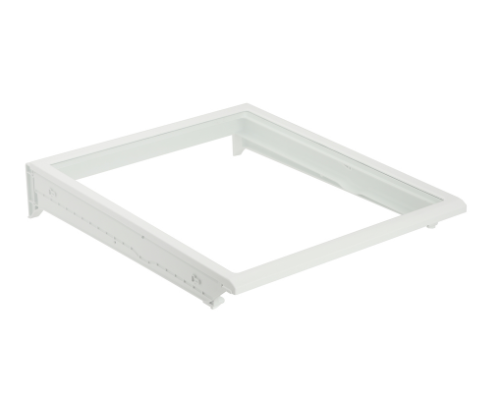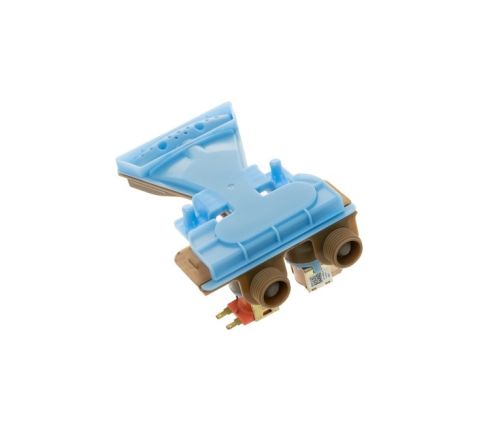
DIY Installation: How to Replace a Refrigerator Condenser Fan Motor
Replacing a refrigerator condenser fan motor is a task that can help restore the proper functioning of your appliance and prevent issues such as inconsistent cooling, overheating, and condenser noises. In this guide, we walk through the steps to replace a refrigerator condenser fan motor efficiently and safely. By following these instructions and taking necessary precautions, you can save time and money by tackling this maintenance task yourself. Let's get started with the process of replacing a refrigerator condenser fan motor.
|
Table of Contents |
Importance of a condenser fan motor in the refrigerator
The condenser fan motor plays a crucial role in the proper functioning of a refrigerator. Here are some key reasons why a working condenser fan motor is important
- Heat dissipation: The condenser fan motor is responsible for pulling air through the condenser coils, helping to dissipate the heat generated by the refrigeration process. Efficient heat dissipation is essential for maintaining the temperature inside the refrigerator at the desired level.
- Energy efficiency: Proper airflow facilitated by the condenser fan motor allows the refrigeration system to operate more efficiently. When the condenser coils can release heat effectively, the compressor doesn't have to work as hard to maintain the desired temperature, ultimately leading to lower energy consumption and reduced utility costs.
- Consistent cooling: A functioning fridge condenser fan motor helps ensure consistent and even cooling throughout the refrigerator. Without proper heat dissipation, certain areas of the refrigerator may become warmer than others, compromising the freshness and safety of the stored food.
- Prevention of frost buildup: Adequate airflow provided by the condenser fan motor prevents excessive frost or ice buildup on the evaporator coils. This helps maintain optimal performance and prevents the need for frequent manual defrosting. If the fridge condenser fan not working, it can lead to overheating of the compressor and inefficient cooling of the refrigerator.
Signs of a faulty refrigerator condenser fan motor
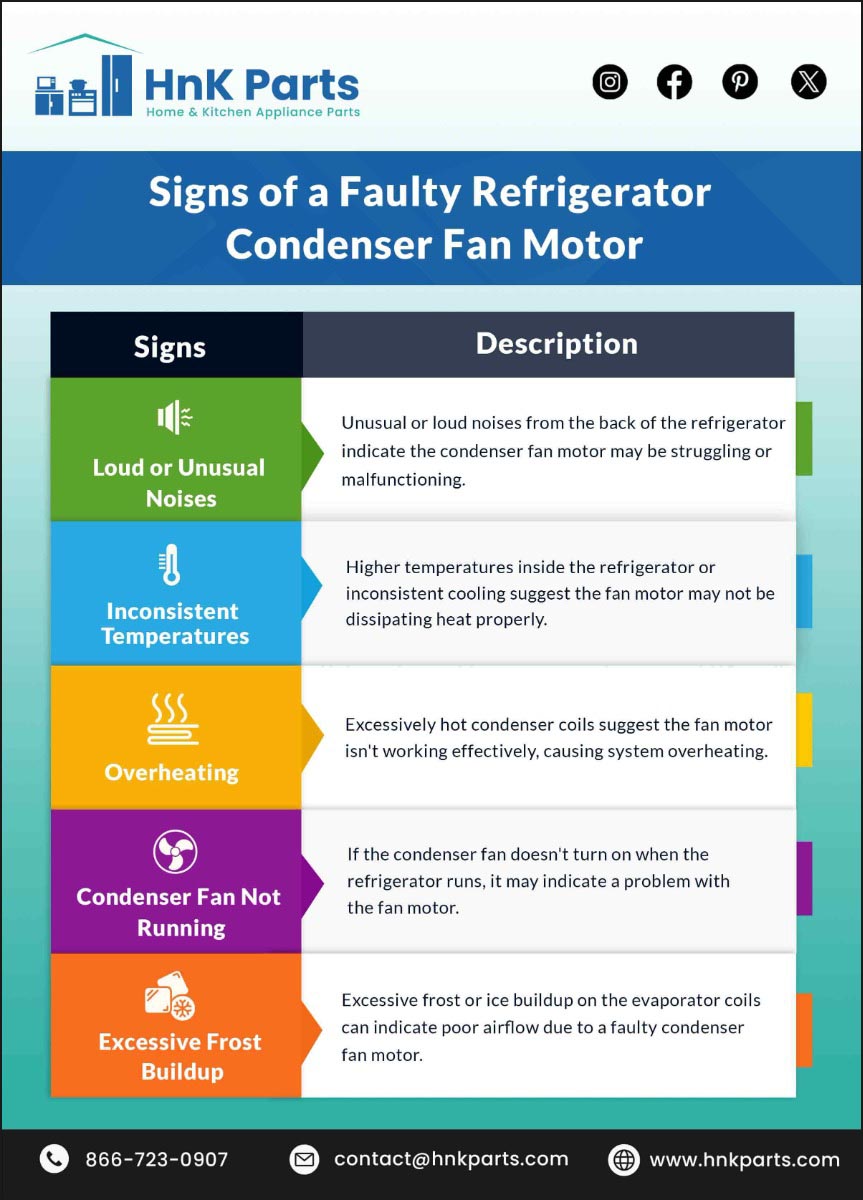
Tools and materials needed
|
Tools |
Description |
|
Screwdrivers (Phillips and flat-head) |
For removing screws and accessing components. |
|
Socket wrench set |
For removing and installing hardware such as mounting brackets or bolts. |
|
Needle-nose pliers |
Useful for grasping small components, especially for electrical connections. |
|
Multimeter (optional) |
To test continuity and electrical connections if needed. |
|
Materials |
Description |
|
Condenser fan motor replacement |
Ensure compatibility with your refrigerator model. |
|
Work gloves |
For hand protection against sharp or metal edges. |
|
Safety glasses |
To protect your eyes from debris or dust during the replacement process. |
Safety precautions
- Unplug the Refrigerator: Before starting any work, unplug the refrigerator from the power outlet to ensure safety from electrical hazards. This step prevents the risk of electric shock and allows you to work on the appliance without any power supply.
- Wear Safety Gear: It's essential to wear appropriate safety gear, including work gloves and safety glasses, to protect your hands and eyes during the replacement process. This will help prevent injuries from sharp components, moving parts, or any debris that may be generated.
- Proper Ventilation: When working around the condenser area of the refrigerator, ensure that there is proper ventilation in the workspace. Adequate ventilation helps disperse any heat or odors, and it's especially important if you're dealing with any refrigerant components.
- Beware of Sharp Edges: condenser fan refrigerator components, especially around the condenser area, may have sharp edges. Take caution to avoid accidental cuts or injuries. Using work gloves and being mindful of sharp edges will help prevent any mishaps.
Refer: What are the Key Parts and Accessories of a Refrigerator?
How to replace a refrigerator condenser fan motor
Replacing the condenser fan motor refrigerator includes several steps -
- Locate the condenser fan motor: The condenser fan motor is typically located at the back of the refrigerator, near the compressor.
- Access the condenser fan motor: Depending on your refrigerator model, you may need to remove the rear panel or access panel to reach the condenser fan motor.
- Disconnect power supply: If there are any electrical connections to the fan motor, ensure they are disconnected safely.
- Remove the old fan motor: Use appropriate tools such as screwdrivers or a socket wrench set to remove any screws or mounting brackets holding the old fan motor in place.
- Carefully detach the fan blade from the motor shaft.
- Install the new fan motor: Align the new condenser fan motor in the correct position.
- Secure the motor by reattaching any screws or mounting brackets.
- Reattach the fan blade: Carefully place the fan blade onto the motor shaft and secure it in place.
- Reconnect electrical connections: If applicable, reconnect any electrical connections to the new fan motor following the manufacturer's instructions.
- Test the fan motor: Plug in the refrigerator and turn it on to ensure the new condenser fan motor is operating correctly. Listen for the fan motor running and verify that it is cooling the condenser coils effectively.
- Reassemble and test: Once the fan motor is confirmed to be working properly, reassemble any panels or covers that were removed during the process. Plug the refrigerator back in and monitor its operation to ensure the cooling is consistent.
Maintenance tips for refrigerator condenser fan motor
- Regular cleaning: Regularly clean the condenser coils and fan to remove dust, dirt, and debris. This helps maintain optimal heat dissipation and energy efficiency.
- Check for obstructions: Periodically check for any obstructions around the condenser fan or coils that may hinder airflow. Clearing obstructions ensures proper cooling performance.
- Avoid overloading: Avoid overloading the refrigerator, as it can strain the cooling system and lead to inefficient operation. Properly spaced and organized items inside the refrigerator allow for better airflow and cooling.
- Temperature monitoring: Use a refrigerator thermometer to monitor and maintain the internal temperature within the recommended range for food safety and optimal freshness.
- Proper air circulation: Ensure that the refrigerator is positioned with adequate space around it for proper air circulation. Restricted airflow can lead to inefficient cooling and the potential overheating of components.
- Defrost regularly: If your refrigerator has a manual defrost timer feature, follow the manufacturer's guidelines for regular defrosting to prevent excessive ice buildup and maintain efficient cooling.
Checkout: 9 Most Common Refrigerator Problems And How To Fix Them
Replacing a refrigerator condenser fan motor is a manageable task that can contribute to the efficient and safe operation of your appliance. By adhering to the safety precautions, you can tackle this maintenance task with confidence. Always ensure that the replacement fan motor is compatible with your specific refrigerator model to guarantee proper functioning. Additionally, if you encounter any unexpected challenges or if you are uncertain about any step of the process, seeking professional assistance is a prudent course of action to ensure the long-term reliability of your refrigerator motor. By prioritizing safety and thoroughness, you can successfully replace the condenser fan motor, contributing to the optimal performance and longevity of your refrigerator.
FAQs
How much does a refrigerator fan motor cost?
The cost of a refrigerator fan motor can range from $50 to $200, depending on the brand and model.
How often should a refrigerator condenser fan run?
A refrigerator condenser fan should run constantly when the compressor is running to help dissipate heat.
What happens when a refrigerator condenser fan fails?
When a refrigerator condenser fan fails, the compressor may overheat, leading to a rise in temperature inside the refrigerator and potential damage to the compressor.
What does the condenser fan do?
The condenser fan helps dissipate heat from the refrigerator's compressor and condenser coils, maintaining proper temperature levels inside the appliance.
How much does a refrigerator condenser fan motor replacement cost?
The cost of replacing a refrigerator condenser fan motor typically ranges from $100 to $300, including parts and labor.


